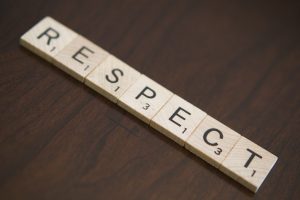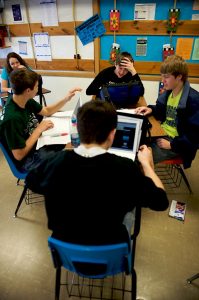When reading the article, The Five R’s for Indigenizing Online Learning: A Case Study of the First Nations Schools’ Principals Course by Danielle Tessaro, Jean-Paul Restoule, Patricia Gaviria, Joseph Flessa, Carlana Lindeman and Colen Scully-Stewart, my immediate reaction was that the findings would prove that technology was useless in education along side First Nations studies. The reason is because I’ve always found it challenging to teach Indigenous content. a European teacher, one must be careful to be respectful and correct in what they are teaching. This doesn’t only apply to teaching about First Nations but about any culture. It is a daunting task to teach about a culture you do not know. It makes you question “what right do I have to teach this to students when I myself have a lack of knowledge around the subject?”. Not only did this concern arise for me but to integrate technology into the study of a culture that is knowingly based around learning about connection to place, how could this possibly work?
Tessaro et al. states that “[b]y applying each R to the course design, structure, and delivery, it was found that the challenges of bridging Indigenous and online education could be effectively mitigated and these could act instead as opportunities for new types of learning” (Tessaro et al., 2018, p. 132). This directly demonstrates that technology is not necessarily at odds with Indigenous teaching but that it can consequently provide avenues of accessibility. Incorporating technology into indigenous teaching could allow for Indigenous learners to be apart of everyday classes even when they are unable to be there in person. They are still able to be apart of both cultures.

“Respect” by haynie.thomas36 is licensed under CC BY 2.0
The “Five R’s of respect, relevance, reciprocity, responsibility and relationships (Kirkness & Barnhardt, 2001; Restoule, 2008)” (Tessaro et al., 2018, p. 126) provide an understanding of how educators conduct their teaching. These ideas were developed towards Indigenous learners yet, all teachers could adopt this way of thinking about teaching in general. These are not just outlines of a way that we should treat one culture but how humans should treat other humans. The Five R’s are a perception that should be allotted to all students. Without respectful relationships students may struggle to learn, without responsibility and relevance students may struggle to connect to content and without reciprocity the reciprocal learning between teacher and student may be compromised.
Tessaro et al. highlights an important aspect of Canadian university culture of “Power and Profit” (Tessaro et al., 2018, p. 133). I have never heard of this before but it reminds me of the teacher as the holder of knowledge. When the teacher perceives that they are meant to shovel content into students brains it provides an environment where students ability to critically think is stunted. This concept has been changing throughout the elementary, middle and high school realms of education. Yet, this article points at the lack of change within the post-secondary system. It points to fundamental disconnect between the varying stages of education and how it affects Indigenous learners.

OLYMPUS DIGITAL CAMERA “Ishi Wilderness” by Kurt Thomas Hunt is licensed under CC BY 2.0
